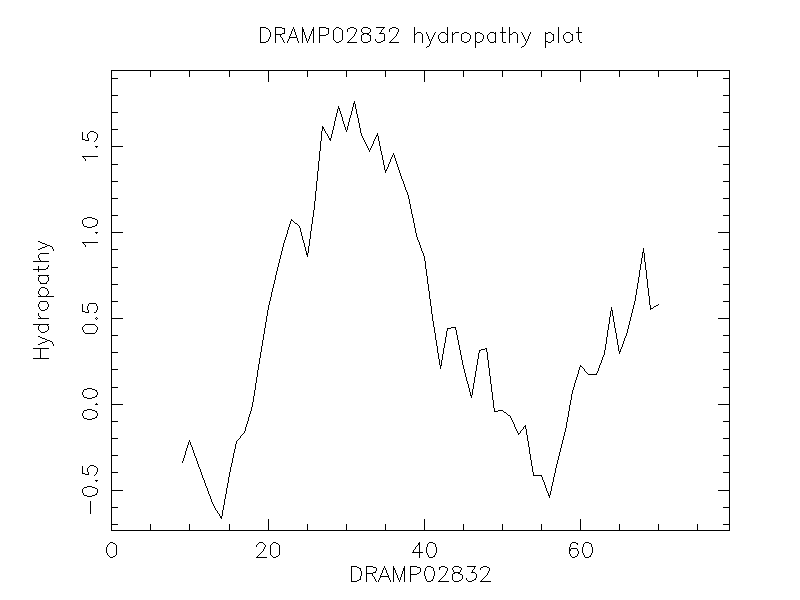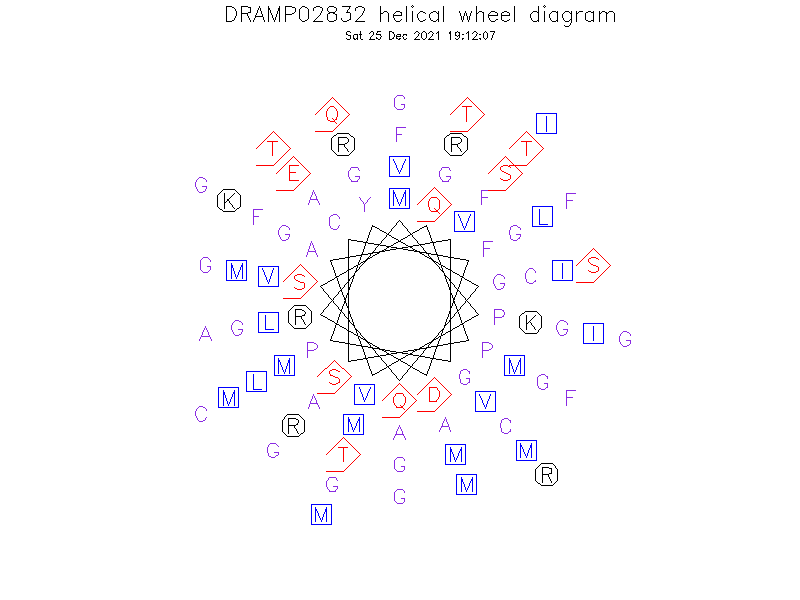General Information
-
DRAMP ID
- DRAMP02832
-
Peptide Name
- Reactive oxygen species modulator 1 (ROS modulator 1; mammals, animals)
-
Source
- Bos taurus (Bovine)
-
Family
- Belongs to the MGR2 family
-
Gene
- ROMO1
-
Sequence
- MPVAVGPYGQSQPSCFDRVKMGFVMGCAVGMAAGALFGTFSCLRIGMRGRELMGGIGKTMMQSGGTFGTFMAIGMGIRC
-
Sequence Length
- 79
-
UniProt Entry
- Q3SZV8
-
Protein Existence
- Homology
Activity Information
-
Biological Activity
- Antimicrobial, Antibacterial, Anti-Gram+, Anti-Gram-
-
Target Organism
-
- Gram-positive bacterium: Staphylococcus aureus;
- Gram-negative bacteria: Pseudomonas aeruginosa, Mycobacterium tuberculosis.
-
Hemolytic Activity
-
- No hemolysis information or data found in the reference(s) presented in this entry
-
Cytotoxicity
-
- Not included yet
-
Binding Target
- Not found
Structure Information
-
Linear/Cyclic
- Not included yet
-
N-terminal Modification
- Not included yet
-
C-terminal Modification
- Not included yet
-
Nonterminal Modifications and Unusual Amino Acids
- Not included yet
-
Stereochemistry
- Not included yet
-
Structure
- Not found
-
Structure Description
- Not found
-
Helical Wheel Diagram
-
PDB ID
- None
-
Predicted Structure
- There is no predicted structure for DRAMP02832.
Physicochemical Information
-
Formula
- C353H567N99O96S14
Absent Amino Acids
- HNW
Common Amino Acids
- G
Mass
- 8182.83
PI
- 9.58
Basic Residues
- 7
Acidic Residues
- 2
Hydrophobic Residues
- 24
Net Charge
- +5
-
Boman Index
- -13.89
Hydrophobicity
- 0.51
Aliphatic Index
- 60.51
Half Life
-
- Mammalian:30 hour
- Yeast:>20 hour
- E.coli:>10 hour
Extinction Coefficient Cystines
- 1740
Absorbance 280nm
- 22.31
Polar Residues
- 30
DRAMP02832

Comments Information
Function
- Has antibacterial activity against a variety of bacteria. Acts by inducing bacterial membrane breakage (By similarity).
Induces production of reactive oxygen species (ROS) which are necessary for cell proliferation. May play a role in inducing oxidative DNA damage and replicative senescence. May play a role in the coordination of mitochondrial morphology and cell proliferation.
Literature Information
- ·Literature 1
-
Title
- NIH - Mammalian Gene Collection (MGC) project
-
Pubmed ID
- PubMed ID is not available
-
Reference
- Submitted (AUG-2005) to the EMBL/GenBank/DDBJ databases
-
Author
- Unknown

